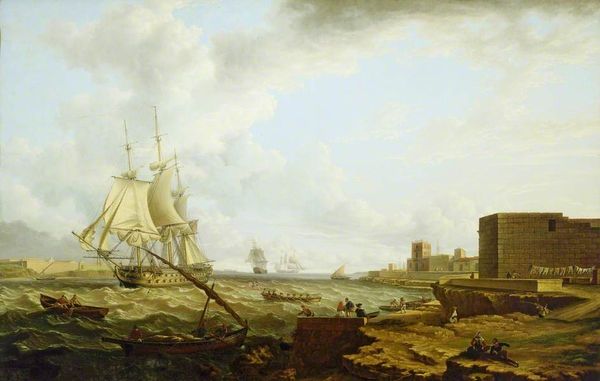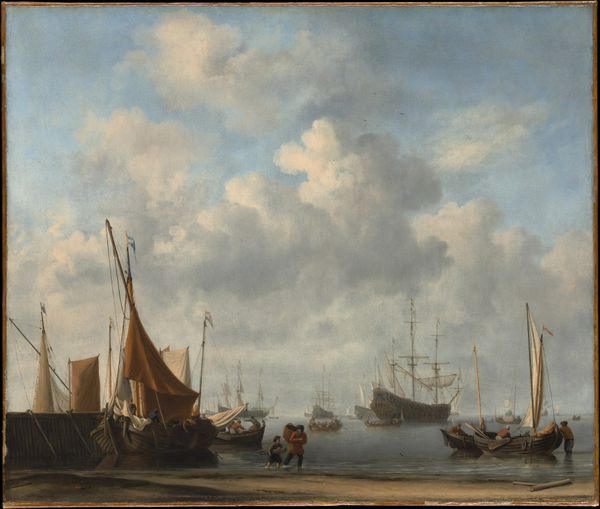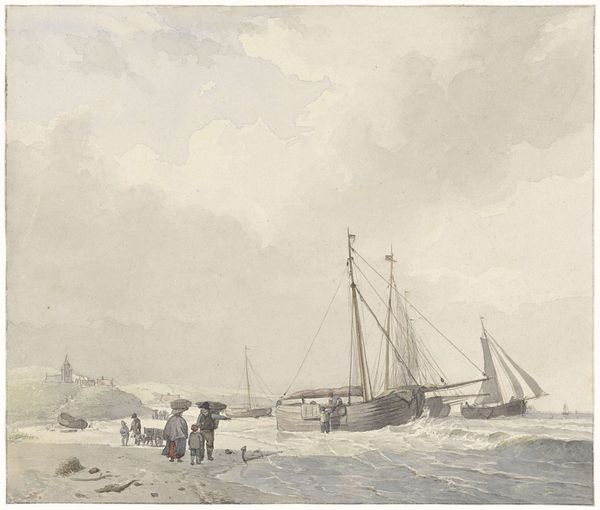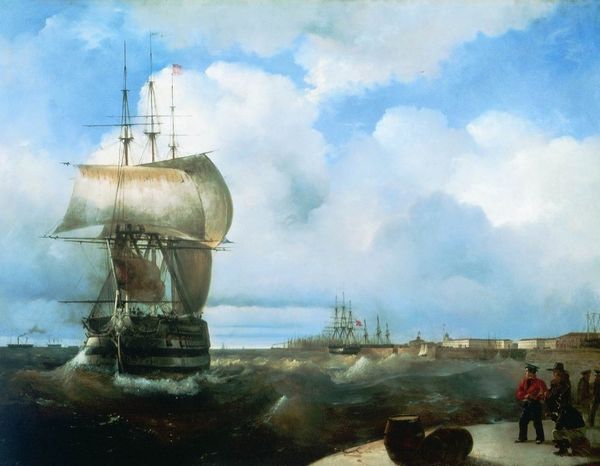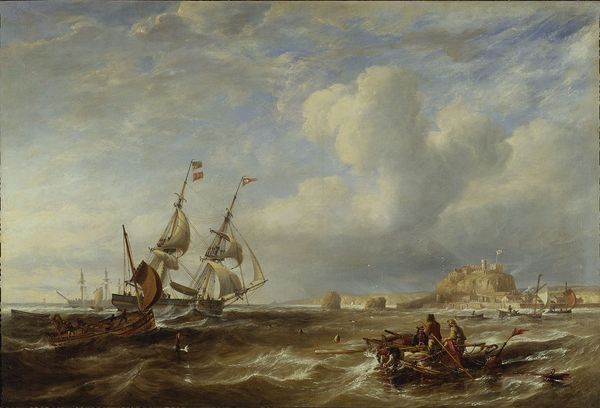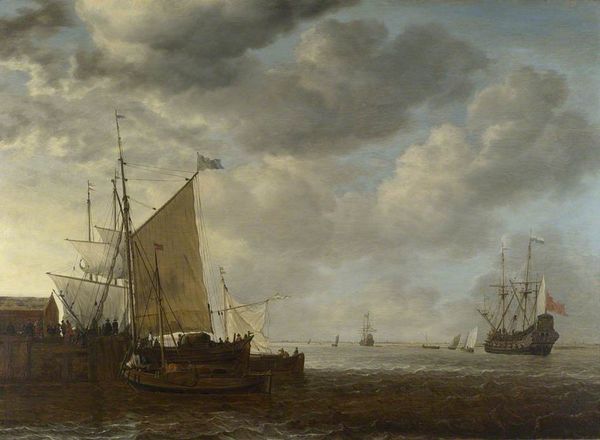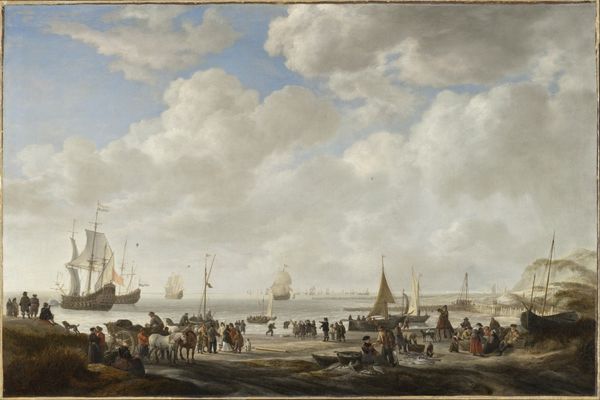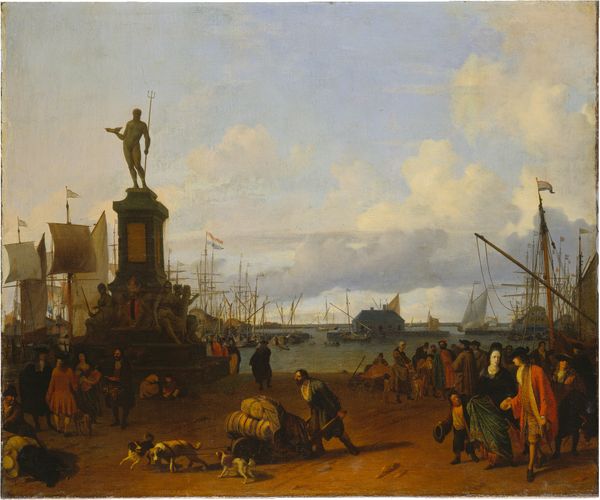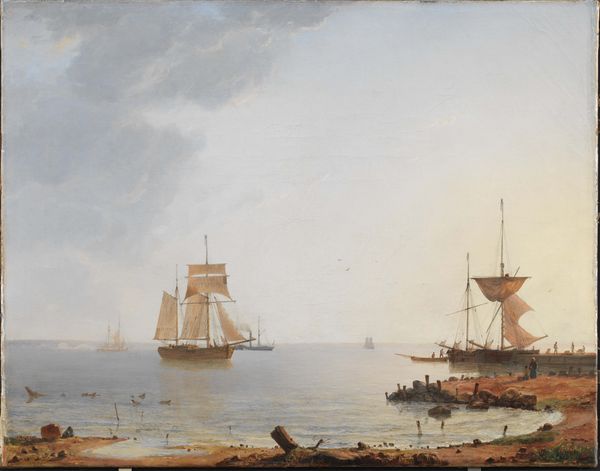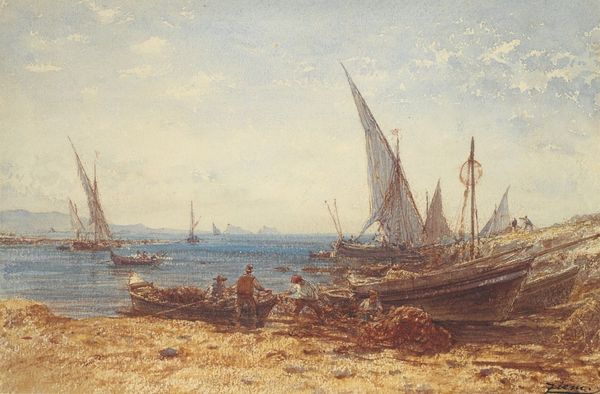
oil-paint
#
dutch-golden-age
#
oil-paint
#
landscape
#
charcoal drawing
#
oil painting
#
genre-painting
#
realism
Dimensions: height 78 cm, width 119 cm, depth 13 cm
Copyright: Rijks Museum: Open Domain
Curator: Johan Conrad Greive painted "Midday break at a Shipyard on the Maas" sometime between 1865 and 1867. Editor: What immediately strikes me is the scene’s palpable quietude. Even with the scale of the ships, the overall feel is still. Curator: Well, shipbuilding was of course crucial to the Netherlands' 19th-century economy, as a crucial port nation; works like these demonstrated national strength to potential trading partners. Editor: The large ship looms large and still feels secondary, though, in the face of these people who seem like toilers in a very direct relation to their world of material production. The composition brings my focus to how the wood and tools they use every day give them sustenance, giving them purpose. Curator: Yes, Greive successfully portrays a harmony, wouldn't you say, between labor and leisure? The workers taking a well-deserved break... The social realism inherent makes it quite approachable, especially to the burgeoning middle classes. Editor: You see the harmony, and I note how class hierarchy operates here. It makes me wonder about the origins of the materials these workers utilize. Were these sourced locally, or did they require larger networks of trade and power structures to procure? Curator: Well, this harbor would have seen material from across the globe! In some ways, the workers represent Dutch prowess in the world of shipbuilding, and the way such places shaped national identity. Editor: It's like looking at the point where material and society fuse, a single point containing so many processes. Curator: Indeed, and paintings like these became iconic visual markers for solidifying public sentiment, showing the everyday industry contributing to a common goal. Editor: So from ships and oak, down to paint, varnish, even these clothes the workers are wearing; such an intense portrait can tell you the most important values of a nation. Curator: In its public role, then, it acts almost like a form of propaganda for the time! It's interesting to view art in that lens of social purpose. Editor: Looking closer has opened up so many ways to view these paintings from the inside. Thank you for helping me bring attention to all these intricate processes in constructing its context and purpose!
Comments
No comments
Be the first to comment and join the conversation on the ultimate creative platform.
